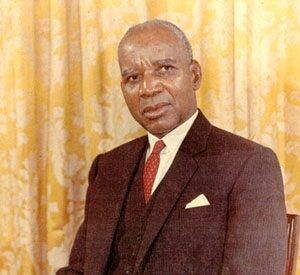By Burnett Munthali
On 3 March every year is Martyrs Day, a day at side to honour those who fought for our freedom. A martyr is someone who suffers persecution and death for advocating, renouncing, or refusing to renounce or advocate, a religious belief or other cause as demanded by an external party.
In Christianity, a martyr is a person who was or is killed for their testimony for Jesus or faith in Jesus. In years of the early church, stories depict this often occurring through death by sawing, stoning, crucifixion, burning at the stake, or other forms of torture and capital punishment.
Fighting for Malawi
Dr. Hastings Kamuzu Banda
The fight for Malawi’s independence
The newly formed Nyasaland African Congress (NAC), later renamed the Malawi Congress Party, fought for independence from the British Empire. Thousands of people from across southern Africa joined the NAC. Soon after, a new leader emerged, Dr. Hastings Kamuzu Banda.
The history of Nyasaland is that between 1953 and 1963, Nyasaland was part of the Federation of Rhodesia and Nyasaland. After the Federation was dissolved, Nyasaland became independent from Britain on 6 July 1964 and was renamed Malawi. Nyasaland’s history was marked by the massive loss of African communal lands in the early colonial period.

Colonial rule
In 1891 the British established the Nyasaland Districts Protectorate, which was called the British Central Africa Protectorate from 1893 and Nyasaland from 1907. Under the colonial regime, roads and railways were built, and the cultivation of cash crops by European settlers was introduced.
1907-1967: An Introduction. Nyasaland was a British Protectorate from 1891 to 1964, when it became independent as Malawi. The country was known as the British Central Africa Protectorate until 1907. It was administered by the Foreign Office until 1904.
The Portuguese were reportedly the first to discover Malawi; in 1859, acting off a tip received from a Portuguese source, David Livingstone discovered Lake Malawi.
The part of Africa now known as Malawi was settled by migrating Bantu groups around the 10th century. Centuries later in 1891 the area was colonised by the British.
In 1953, Malawi became a protectorate within the semi-independent Federation of Rhodesia and Nyasaland. The Federation was dissolved in 1963. In 1964, the protectorate was ended: Nyasaland became an independent country as a Commonwealth realm under Prime Minister Hastings Banda, and was renamed Malawi.
In 1891 the British established the Nyasaland Districts Protectorate, which was called the British Central Africa Protectorate from 1893 and Nyasaland from 1907. Under the colonial regime, roads and railways were built, and the cultivation of cash crops by European settlers was introduced.


